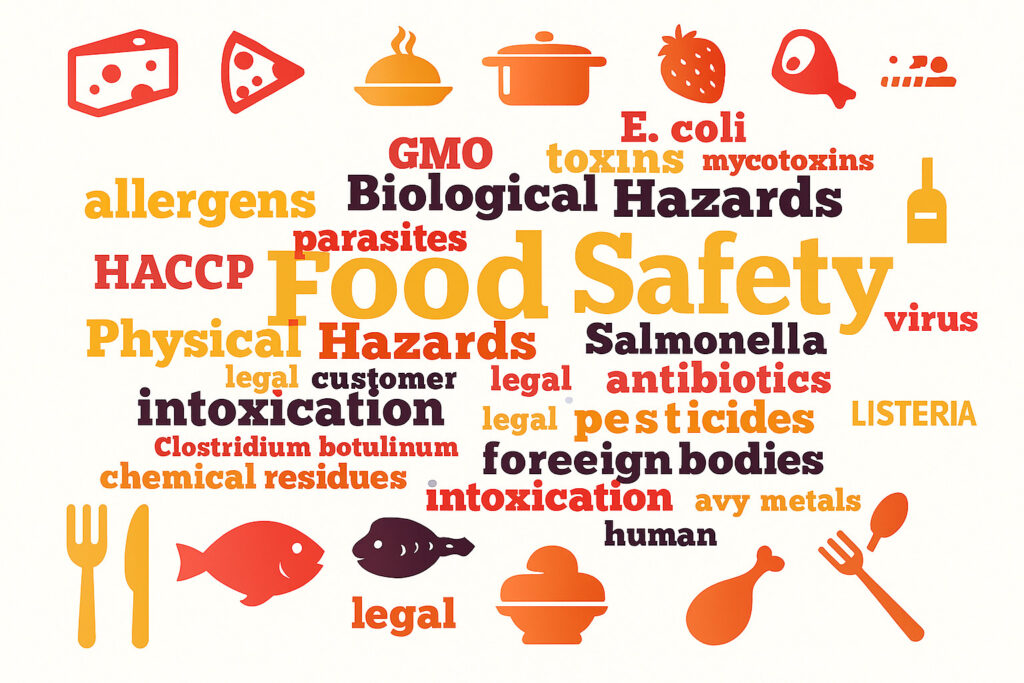- About
- Courses
- Advisory
💡 Build the Basics
- FSMS
- Home-Based
- BeSS
- MeSTI
- Halal IHCS
💡 Export Ready
- Food GMP
- HACCP
- VHM
- Halal Assurance System (HAS)
💡 Go Global
- ISO 22000
- FSSC 22000
💡 Others
- NPRA GMP & GDP
- Blog
- Contact Us
Avoid the top HACCP mistake: learning without action. Discover how continuous learning drives effective food safety and compliance in your HACCP system.
While acquiring knowledge through training is essential, failing to implement that knowledge in real-world scenarios is a critical mistake. The food safety team must actively apply what they learn to ensure that HACCP systems are effective and up-to-date, including appropriate verification processes. Without this action, valuable training becomes wasted potential, jeopardizing food safety and compliance.

Learning is the key to driving HACCP maintenance.
The food safety management team is at the heart of HACCP, ensuring the systems that protect the food are always working. While HACCP might seem complicated to some, it’s really about one thing:
Keeping Food Safe.
And remember, HACCP certification isn’t just a badge of honor, it’s a promise! A promise that you, as part of the food safety team, are the backbone of the operation, ensuring that every step of the food production process is running safely and efficiently.
Hmm… what does a food safety team in manufacturing really need to know? Is it just about attending those requirement and internal audit training sessions? Nah, that’s just the tip of the iceberg!
You might think you’ve got the basics down, like how to establish HACCP (Hazard Analysis Critical Control Point) , but if you’re still feeling a bit lost, you’re not alone. Why is that? Because those two trainings are just scratching the surface! Once you break through that iceberg, what do you discover beneath? A vast world of knowledge awaits! The real journey of learning is just beginning.
Now, this is where the food safety team really takes charge. It’s not just about the training; it’s about putting that knowledge into action. They are often the unsung hero, working behind the scenes to ensure those systems are working every single day.
You’re the ones setting the standards, ensuring quality control is on point and playing the role of the “food safety police” to make sure every detail is covered and when auditors come knocking, it’s the food safety team who is on the front lines, scrambling to close those CARs (Corrective Action Requests) and keep everything running smoothly. They’re constantly on the go, making sure food safety never takes a back seat!
Phew, that’s a lot to take in! But don’t stress, there’s no need to rush. Continuous learning is the name of the game for you to drive maintenance of HACCP system!
This is why it’s not enough to rely solely on initial training sessions. You must prepare and equip yourself with the knowledge and tools necessary to protect and maintain your HACCP system.
Continuous learning is essential; it empowers you to adapt to changes in food safety practices, understand emerging threats and implement effective solutions.
For example, the world of food safety is always changing! New regulations pop up, standards change and technologies improve. But staying ahead of the game ensures that your practices are always spot-on, whether it’s local or international standards.
And let’s be real: nobody wants fines, recalls, or a tarnished reputation.
That’s why continuous learning is your secret weapon. You’re the ones who make sure everything stays compliant, up-to-date and running smoothly. Keeping your skills sharp means, you’ll always be ready to tackle whatever comes next.
So, you get it, right? But hold on, there’s more to it!
You also need to stay sharp on the world of microbes—yep, both the evil ones (Pathogen!) and the good ones that help keep food safe. And let’s not forget about hygiene. Plus, there’s always research, literature reviews and new findings.

Imagine a tree with deep roots—the roots represent the foundational knowledge you need in food safety, while the tree itself symbolizes the entire food safety system. If the roots are weak or insufficient, even the tallest tree is at risk of toppling over. Just as a tree requires strong roots to thrive, a food safety team needs a solid understanding of hygiene, microbial management, labelling, legal compliance and others to support the entire system effectively.
Learning doesn’t have to be hard! I know that as adults, many of you want to keep your knowledge up to date but often struggle to find the time. No worries! In the next topic, I’ll share some tips on how to engage in continuous learning in an easy and enjoyable way.
Remember, staying updated is essential to eliminate any fears about maintaining the system and ensuring you do it effectively.
Discover More: Embracing Continuous Learning to Elevate Your HACCP Skills in a Busy World
Learning Made Easy: Discover Engaging Strategies to Embrace Continuous Growth and Achieve Lasting Success!
HACCP training teaches food safety teams how to identify, control, and monitor hazards in food production. It is essential for maintaining food safety, meeting regulatory compliance, and preventing contamination or recalls.
No. While HACCP training is critical, compliance requires putting the training into daily practice. The real value comes from applying knowledge to maintain and improve food safety systems.
Food safety teams should engage in continuous HACCP training to stay updated with new regulations, technology, and industry best practices. Annual reviews or refreshers are highly recommended.
If HACCP training isn’t applied, food safety systems may fail, leading to non-compliance, audit findings, recalls, or even harm to consumers. Training must be paired with action for success.
Effective HACCP training should cover hazard analysis, critical control points, corrective actions, verification, and practical application in real-world food safety operations.
Continuous learning reinforces HACCP principles, helps teams adapt to regulatory changes, and strengthens system maintenance—turning basic training into lasting food safety success.